![]()
Photos by MJ Klein
On the way to visiting a Lao village, our guide told us that the trucks carrying huge logs were on their way to Vietnam.
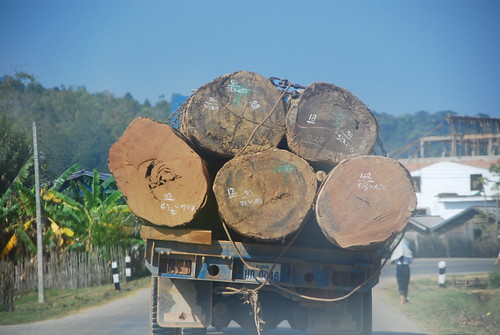
We saw quite a few of these over-loaded logging trucks on the road that day.

We arrived at the small Lao village and took this path from the road.
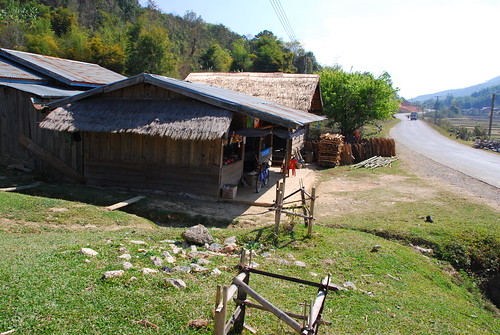
This is a store beside the path.
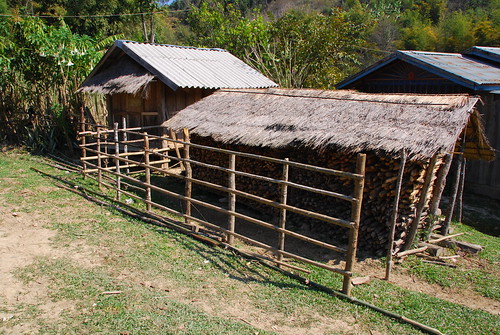
One of the animal pens used in the village.
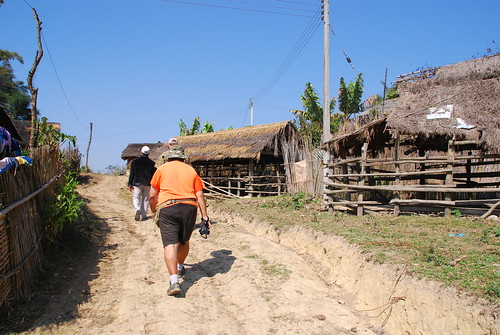
Our guide (black shirt) is leading us up the path. That’s Michael Cannon beside him, and Michael Turton in the orange shirt.
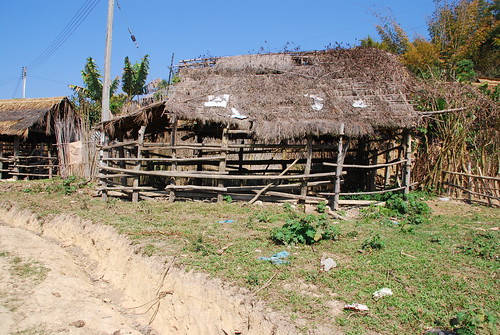
This is another animal pen in the village.
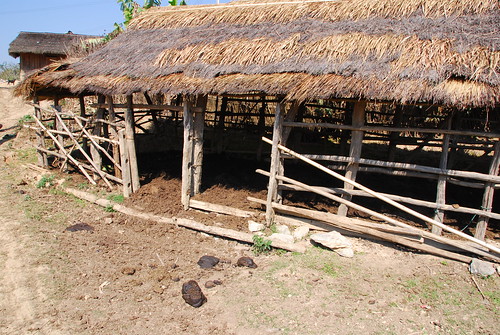
If your Mother ever told you that your room looks like a pig sty, this is what she was talking about.
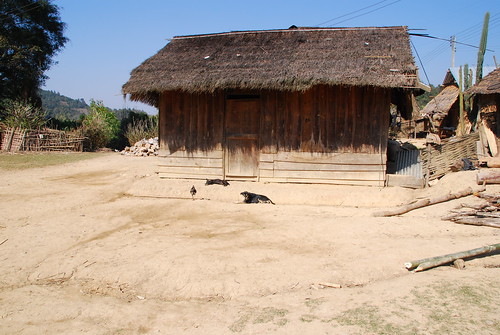
This is someone’s house. Normally Lao houses are up on stilts, but in this village they seem to be built on the ground.
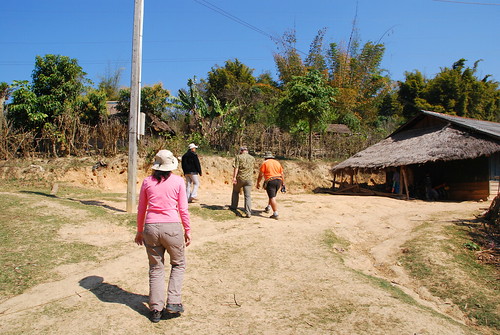
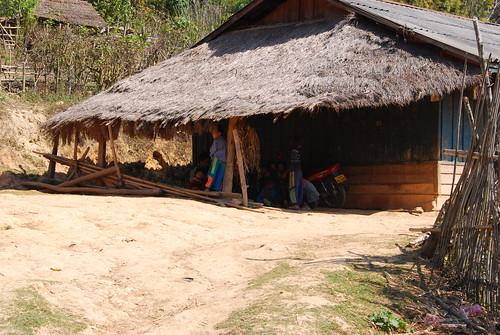
We spotted these kids. It looked like they might be part of a school class.
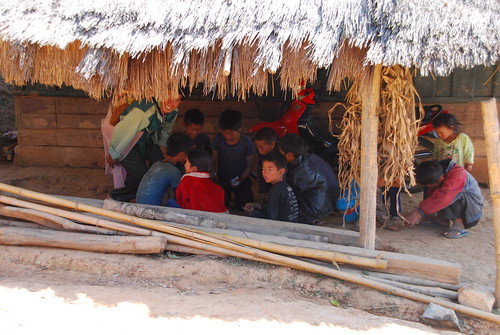
But when we approached them, we found out they were gambling with cards.

This is the house we’re going to visit.
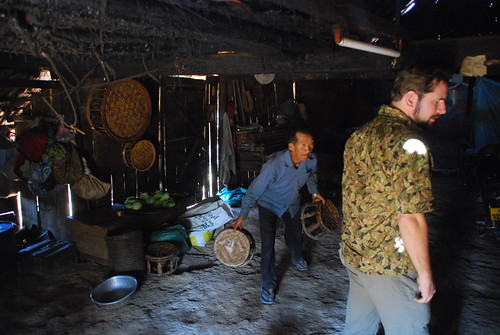
Inside the house is dark. There are no artificial lights inside. Illumination is provided by keeping the door open.
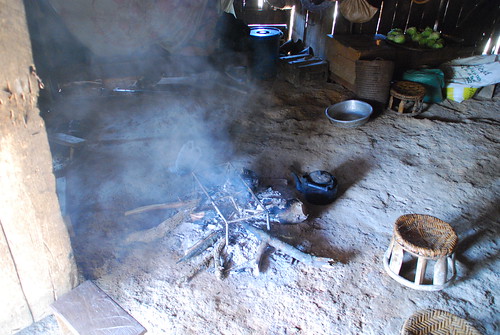
There was a smoldering fire going inside. This filled the house with the smell of wood smoke.
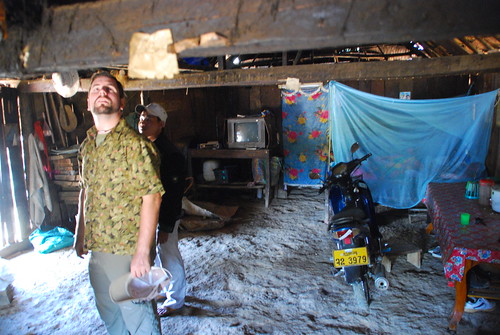

This shot shows why the fire was going; the owner was smoking corn, which can be seen hanging from the low ceiling structure.
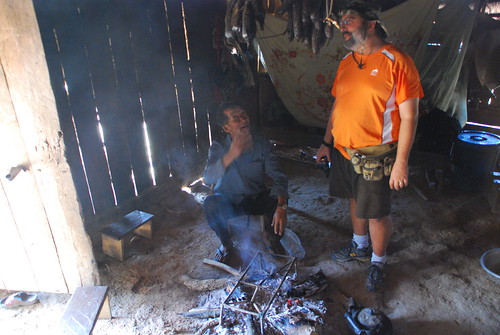
The owner contemplates the foreign visitors to his home.
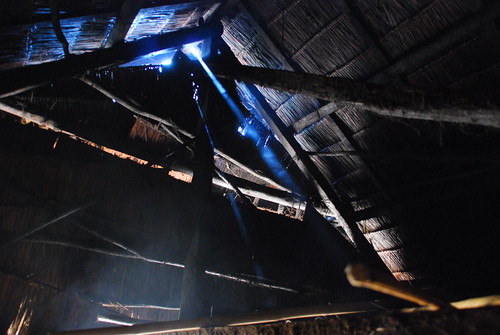
This is a shot of the roof, above the ceiling superstructure. The smoke went up to the top of the inside and filtered out through holes.
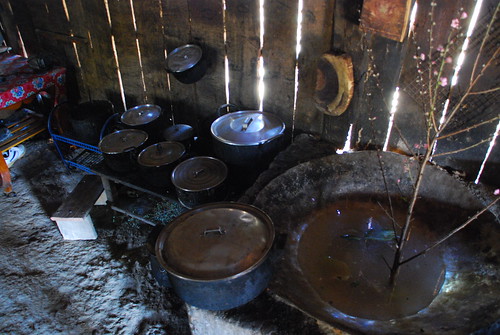
These are the family’s cooking pots, all blackened by cooking over wood fires. I have no idea what the basin with the twig is for.
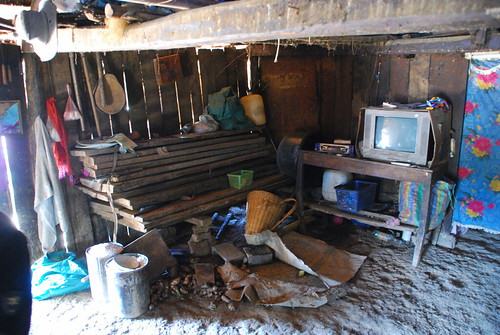
This is the far end of the house, near the second door.
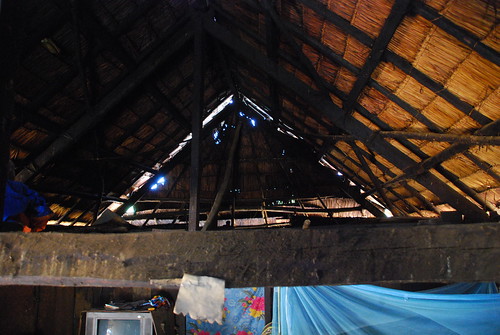
This is a shot above the ceiling superstructure at the far end of the house. Notice the mosquito netting (blue). The netting was hung over the bed.
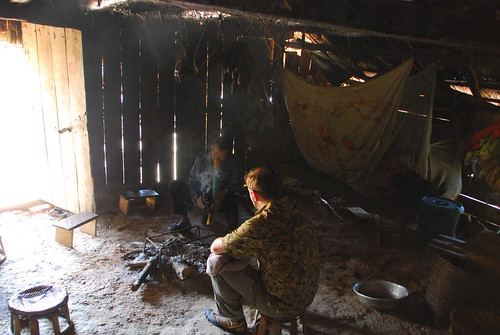
Michael Cannon took a seat near the home owner.
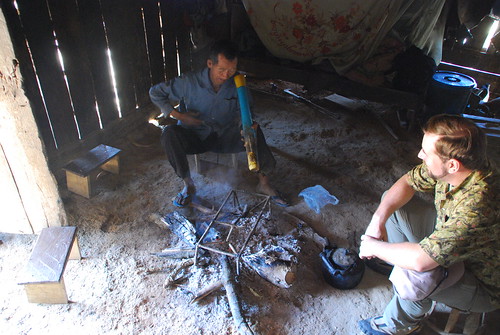
The home owner broke out his bamboo bong….
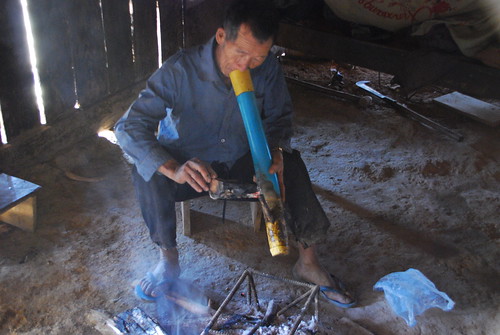
….took a piece of ember and lit up. He was smoking Lao tobacco, a crudely processed blend he showed us. The bong has water in the bottom that cools the smoke as the smoke bubbles up through it.

Dogs – the bane of my existence, are everywhere in these small villages.
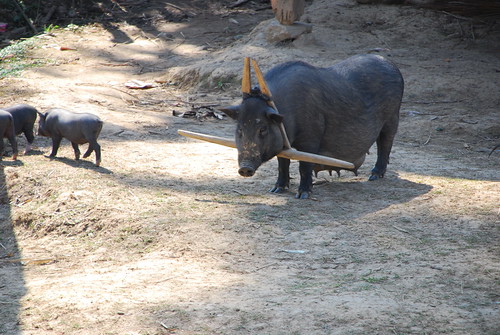
This pig and her 4 suckling piglets were wandering around in the village. Our guide told us that the wooden collar is to prevent the pig from getting into things it shouldn’t, such as someone’s garden.
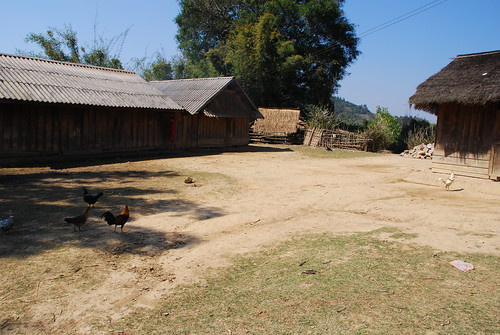
We took one last look at the village and headed back to our guide’s van.
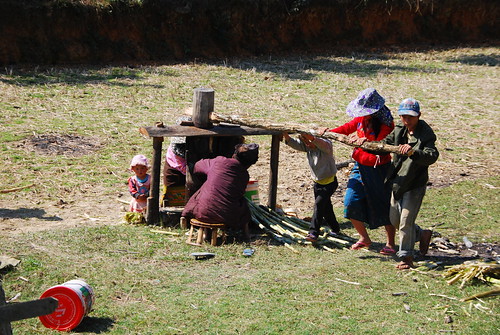
But across the street we noticed something going on. We went to investigate.
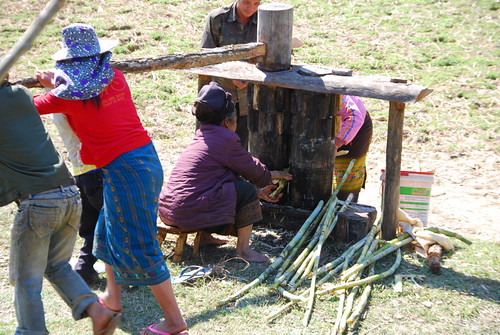
Some of the villagers were using this rig to squeeze juice from sugar cane.
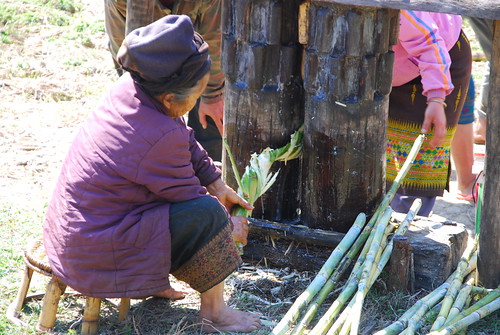
Twisting the cane helps put more pressure on the pieces and squeeze more out of them.
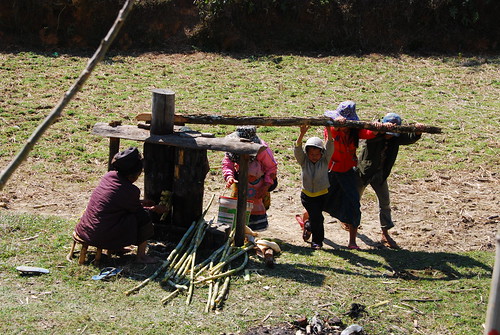
Some of the local kids were pushing the boom around and providing the energy for the press.
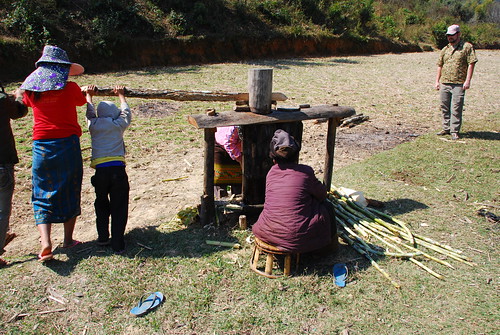
Michael Cannon looks on as the work progresses.
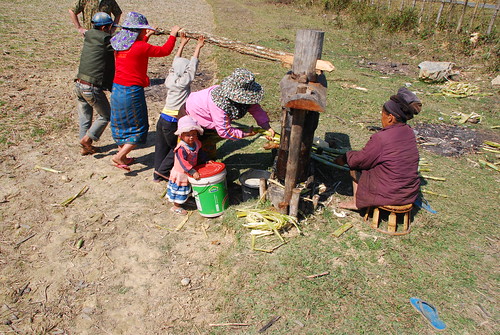
The back of the press is to the left. The pieces are fed in from the right and the juice is collected by a can in the back (left).
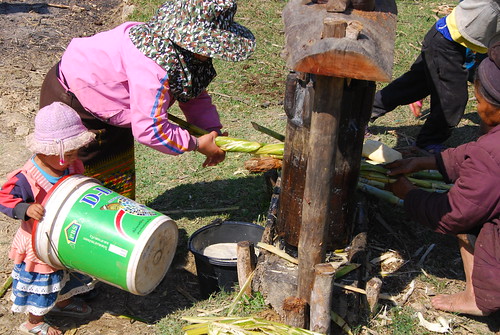
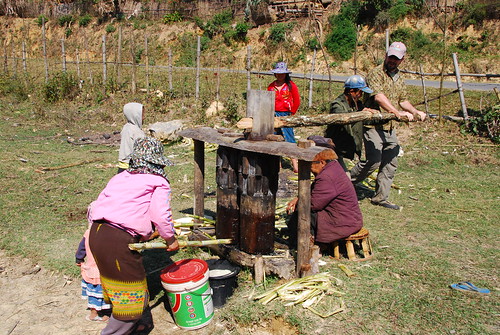
Before long, Michael Cannon joined in on the boom.
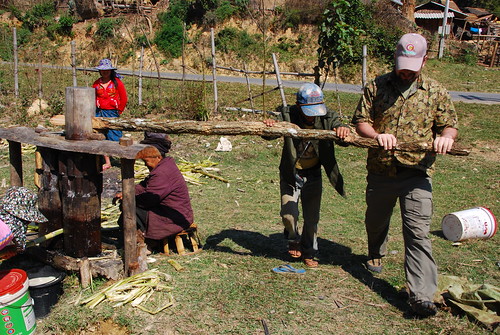
The village women really liked that! They fed more and more pieces into the press, knowing that there was more power available.
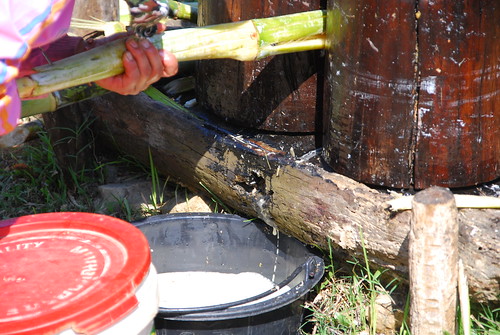
Notice the black bucket catching the juice. There is a slot in the frame and a hole in the back where the juice runs out.
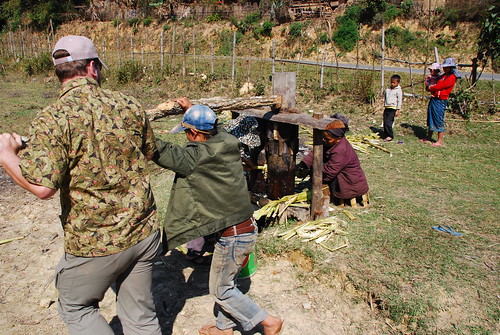
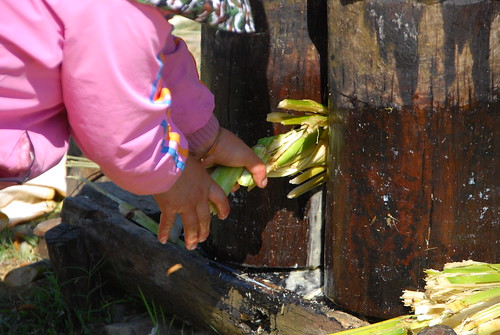
There is quite a bit of the white juice running down the rollers.
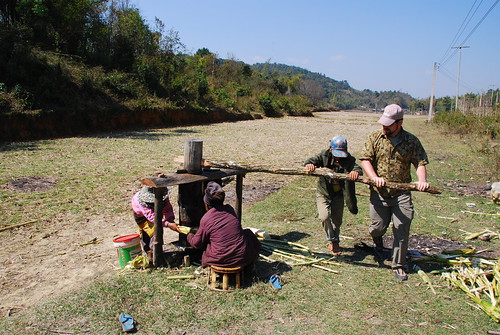
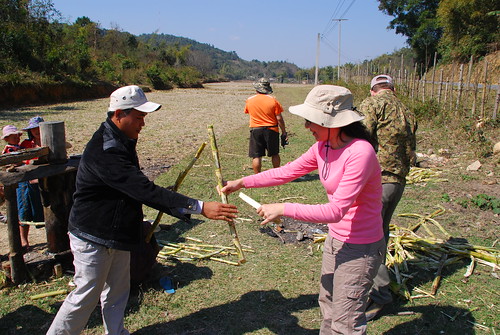
Our guide gives Hui-chen a piece of sugar cane to chew.

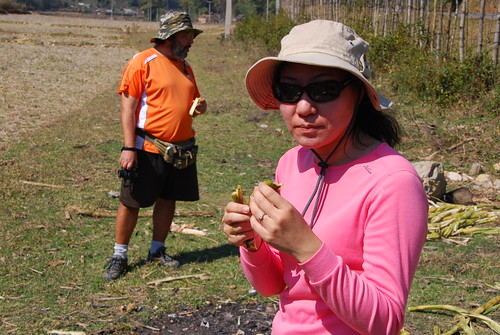
She said it was good. Of course we have sugar cane in Taiwan too, but for many tourists from around the world, coming to this village is probably their first taste of sugar cane.
After spending a few more minutes at the press, we said goodbye and headed to the next stop on our tour: Mulberries.

Mulberries is a complex where silk and mulberry tea is produced.
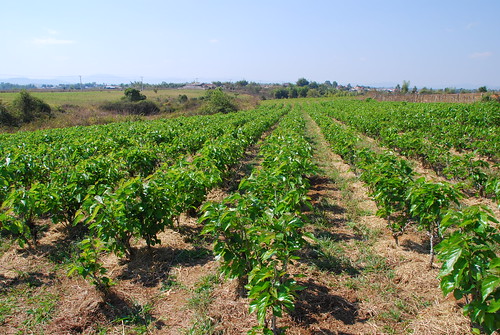
This is the mulberry grove. The leaves feed the silkworms and are also sold dried, as tea.
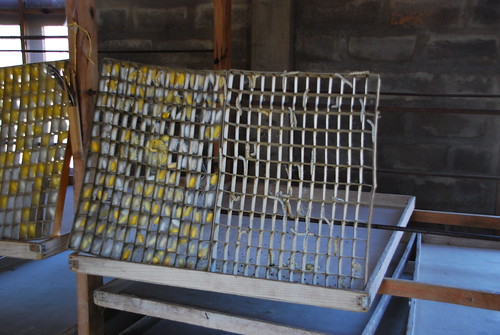
Inside the building where the worms are housed, we saw silk cocoons being produced.
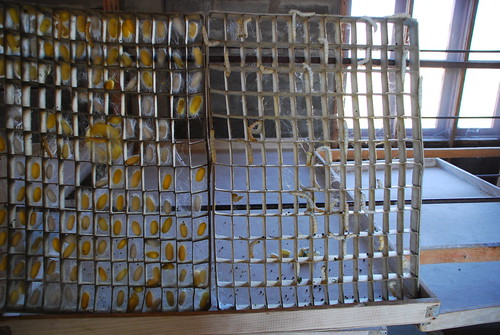

These are silk worms being fed mulberry leaves.
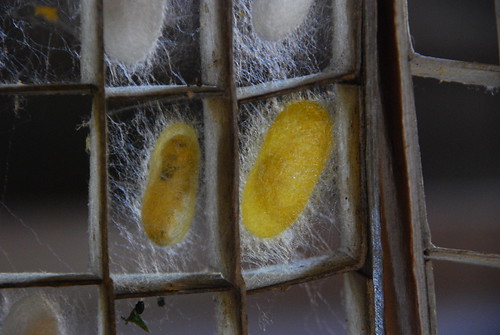
Closeup of some silk cocoons.
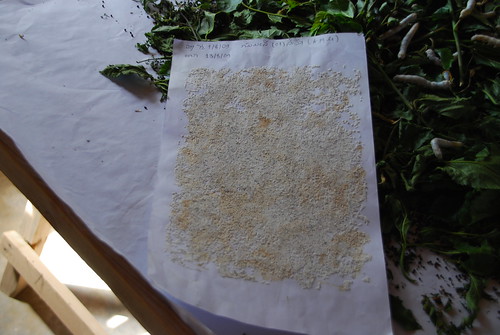
These are silkworm eggs. Our guide told us that to start their operation, they bought silk worm eggs from Thailand.
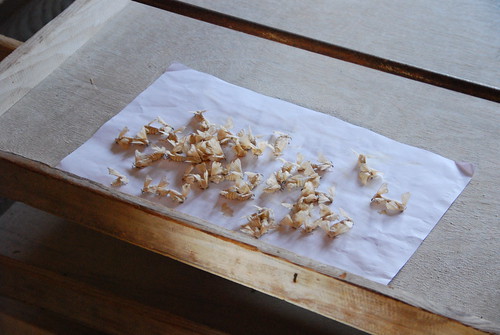
These are moths, which are what comes out of the silk cocoons of course. Silkworm moths cannot fly. The group shown here is producing eggs.
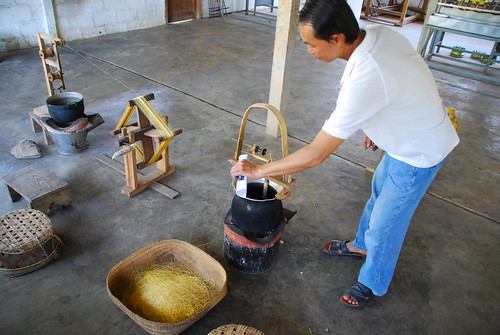
What I did not know is that a silk cocoon is made up of a single thread of silk. This single thread can be untangled and spooled if the cocoon is placed in hot water. Here our guide shows us a simple machine for spooling the threads.

More simple machines for spooling silk thread.
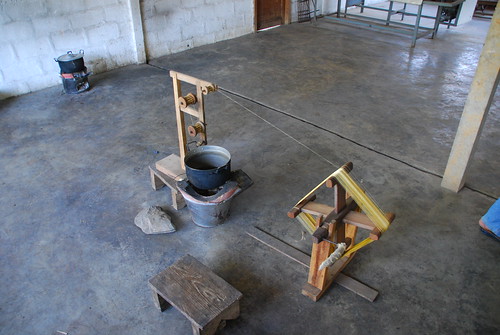
These simple machines are run by hand.
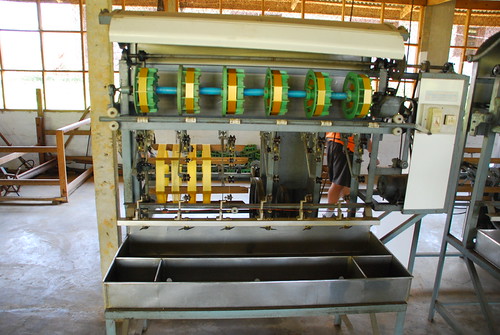
This is an example of a powered machine for spooling silk thread. We saw white and yellow silk being produced.
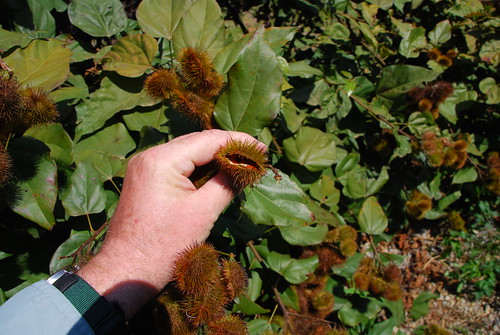
Once the silk is harvested from the cocoons it must be dyed. This tree is used to produce red dye.
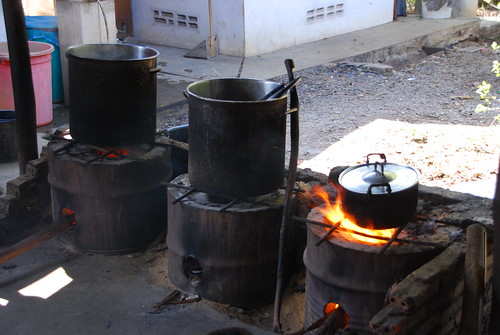
We visited the dyeing operation where they had various pots of different colors being prepared.
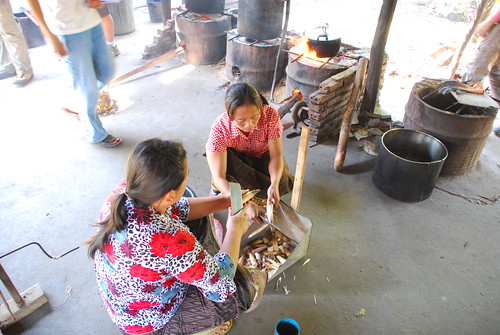
These women are preparing raw materials for a dye.
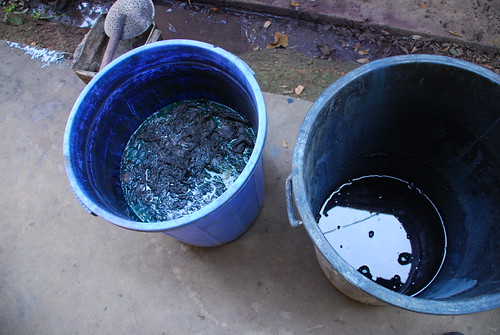
These 2 barrels contain the materials for blue and green dyes.
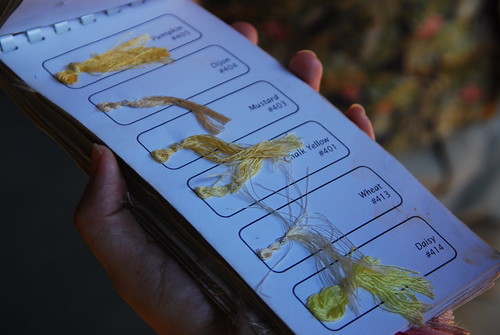
Each dye color is listed on a chart, along with samples. The list of dyes is very comprehensive and has everything you could possibly imagine – all derived from plant or mineral materials.
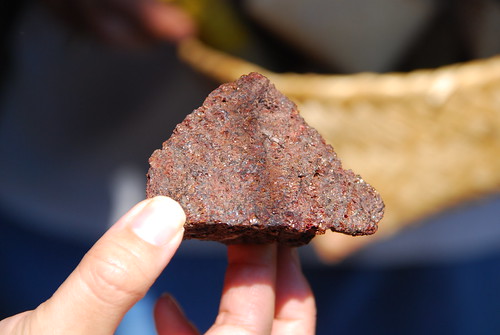
This is a dye-producing mineral.
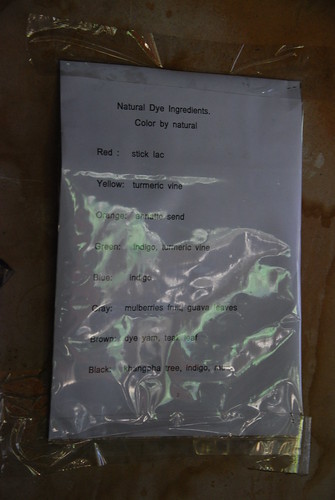
This is a list of some natural dye materials, such as turmeric vine.
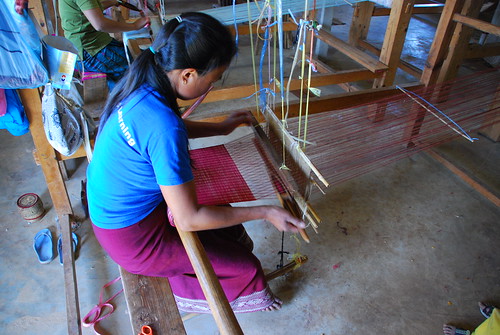
Next, we saw the weave looms where the various color silks were woven into fabrics.
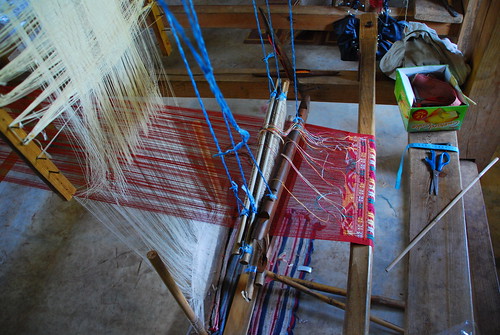
Some of the weaving operations were very complex and the patterns produced, intriguing.

There are no computers, or even motors to run these looms. They are all operated by hand and the patterns are managed manually by the skillful operators.
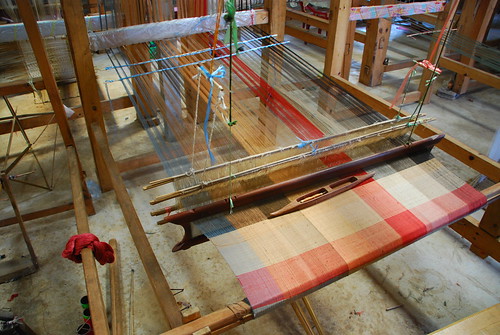
This is our closing shot of a beautiful silk pattern being produced on a hand loom.
Don’t miss our next installment. We’re going back to Thailand, to Udon Thani!
Thank you for reading! We hope you enjoyed our visit to a local Lao village. We welcome your questions and comments. Please feel free to retweet this article and leave your recommendations below.

Former field engineer MJ Klein now lives in Taiwan, and writes articles that primarily feature photographs of travels of MJ and wife Hui-chen, plus daily goings on in the bustling island nation of Taiwan, and other places in Asia. Articles feature people, culture, food, situations and sometimes the trials and tribulations of traveling in places such as China, Hong Kong, Thailand, Laos and of course Taiwan.








